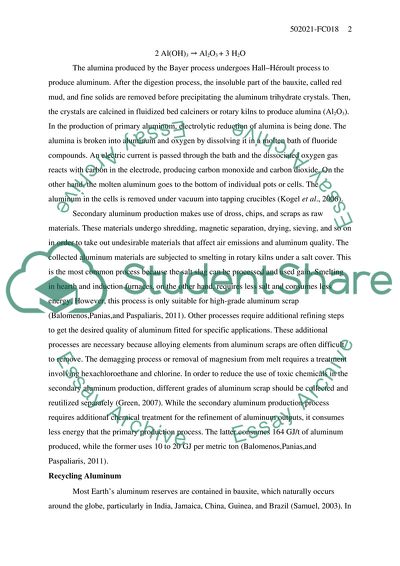Cite this document
(The Industrial Production of Aluminium and Its Recycling Essay Example | Topics and Well Written Essays - 1250 words, n.d.)
The Industrial Production of Aluminium and Its Recycling Essay Example | Topics and Well Written Essays - 1250 words. https://studentshare.org/chemistry/1798826-the-industrial-production-of-aluminium-and-recycling-aluminium
The Industrial Production of Aluminium and Its Recycling Essay Example | Topics and Well Written Essays - 1250 words. https://studentshare.org/chemistry/1798826-the-industrial-production-of-aluminium-and-recycling-aluminium
(The Industrial Production of Aluminium and Its Recycling Essay Example | Topics and Well Written Essays - 1250 Words)
The Industrial Production of Aluminium and Its Recycling Essay Example | Topics and Well Written Essays - 1250 Words. https://studentshare.org/chemistry/1798826-the-industrial-production-of-aluminium-and-recycling-aluminium.
The Industrial Production of Aluminium and Its Recycling Essay Example | Topics and Well Written Essays - 1250 Words. https://studentshare.org/chemistry/1798826-the-industrial-production-of-aluminium-and-recycling-aluminium.
“The Industrial Production of Aluminium and Its Recycling Essay Example | Topics and Well Written Essays - 1250 Words”. https://studentshare.org/chemistry/1798826-the-industrial-production-of-aluminium-and-recycling-aluminium.


